When a customer decides to go elsewhere, it’s a huge blow. And often, it’s a surprise. Customers leave for a variety of reasons – they’re enticed by a competitor, they move services in house, they’ve experienced budget cuts. But whatever the cause, it often leaves you wondering: what did we do wrong? What could we have done differently?
You can survey former customers to find out why they left, but it’s a reactionary tactic. While you’ll gain some insight, you won’t get the deep understanding that will enable you to turn things around long before the customer calls you up to cancel their account.
Discovering the Warning Signs
The issue is that customers won’t tell you directly that they’re thinking of leaving. And – like many personal relationships – by the time they actually decide to leave, their decision is final and there’s no going back.
But what if you could pinpoint those moments – the specific interactions, the precise behaviors – that are the precursors to your customer’s decision? And better yet, what if you could take action right at those moments that would actually strengthen your customer relationship?
We’ve learned that customers who are planning to leave give off warning signals – defined behaviors that predict customers will go elsewhere. A customer can’t articulate those warning signs, but they can be discovered through research.
Identifying Red Flags
Many companies already have valuable data in-house to begin the research process. KS&R takes that customer service data and supplements it with additional primary research, including talking to current customers, as well as internal sales and customer service staff. We then analyze customer behavior to identify factors that predict whether customers stay or go.
The analysis detects patterns that indicate behavioral red flags. While they’re unique for each company, examples include:
- A customer calls customer service to renegotiate rates
- The contract renewal process is lengthier than average
- Calls from customer or sales representatives decrease (or conversely, increase)
- A customer calls more frequently with requests or complaints
- When comparing a customer’s behavior to previous trends, transactions and account usage show a decline
- Customer satisfaction scores erode for a sub-segment of customers
Taking Action
The best news about identifying these red flags is that once they’re discovered, it’s usually a simple process to take action.
For example, imagine that a customer calls five times within a month with product questions – a threshold that’s been identified through research as a red flag.
The customer service software can be automated to alert staff that a customer has reached the “five call” threshold. An automatic message would go out to another staff member who has been preassigned to handle accounts considered at-risk.
Creating the Ideal Customer Service Scenario
Continuous tracking and analyzing this data becomes a template for your company’s ideal customer service scenario.
It’s important to look at more than just at-risk customers. From an analytical perspective, it’s very telling to examine your most loyal customers and compare them to disengaged customers, including on factors/attributes like:
- How often those customers interact with customer service
- The presence or absence of problems
- How and how quickly problems are resolved
The Key: Be Proactive
Companies typically undertake research to identify red flags as a reaction to customers leaving – especially when they don’t understand why.
The key, however, is to implement a research program before the exodus – one that monitors all of your customers, from the most loyal to the most at-risk. Identifying the behaviors that indicate customers are happy – as well as the behaviors that signify customers may leave – is the first step in creating strong, lasting customer relationships.
What behaviors do your customers exhibit before they leave?


